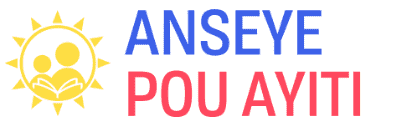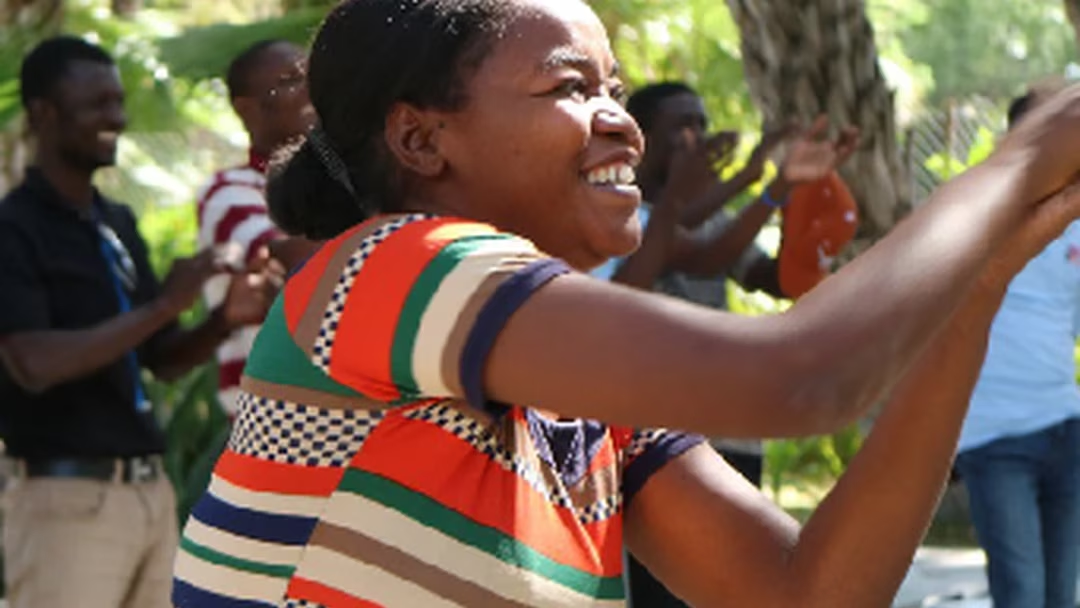In 2009, the Haitian government committed itself to achieve the Millennium Development Goals (MDGs). According to one of them, the government aimed to send all children to school in Haiti and complete the first two elementary school cycles. To this end, the Prime Minister and Minister of National Education and Vocational Training at the time developed a plan called the Estrateji Nasyonal Aksyon Pou Tout Moun (SNA/EPI) (National Strategy for Action for All). This strategy has resulted in Pwojè Pou Apiye Edikasyon Pou Tout Moun (Project to Support Education for All). This project is called Edikasyon Pou Tout Moun (EPT) (Education for All).
To support Haiti in its efforts to achieve the goal of Edikasyon Pou Tout Moun (EPT), by 2015, the World Bank had financed a training program called Fòmasyon Inisyal Akselere (FIA) (Accelerated Initial Training). The government executed this program under the Directorate of Training and Development (Direksyon Fòmasyon ak Pèfeksyònman, DFP in Creole) of the Ministry of National Education. DFP set up the FIA to professionalize Haiti's teaching profession and develop the necessary skills for teacher-leaders because they had realized that many teachers, especially at the primary level, have never been trained to teach. Therefore, one of the FIA program's trademarks is that it allows the student-teachers to do internships in the classroom setting to improve the quality of training they provide to students. Also, the FIA program will enable them to fill the academic and scientific gaps around student-teachers. That is why the program affects student-teachers on the following levels: Psychopedagogical and didactic to integrate and articulate the two main components of the training based on theoretical and practical training.
Similarly, while the Haitian government seeks to improve classroom teachers' capacity through the FIA training program, civil society institutions appear to be also concerned about the quality of classroom teachers' performance. In this sense, Anseye Pou Ayiti (APA), with a non-governmental organization's structure, offers a professional development program (a series of training) on transformational leadership for Haitians of all categories, including teachers already teaching in the classroom. Is the APA program an additional component to the efforts to train the teachers? Does it differ from programs that have the same goal of teacher training?
What are the differences and similarities between the FIA and APA programs? To find answers to these questions, we will present each of these programs, and then, we will look at their similarities and differences.
The FIA training begins with multi-level courses in the following disciplines: mathematics, French, and Creole. Over time, student-teachers are trained in the following subjects: classroom management, assessment, learning, micro-teaching, didactics, social studies, arts, and cultural education. During one year, the student-teachers train and at the same time carry out observational internships where they observe class management.
In the FIA training, there is also a course on legislation prohibiting children's corporal punishment in class. It's a way to bring the student-teachers aware of the importance of not hitting the children, but they didn't really discuss other non-violent alternative discipline forms. They did not show student-teachers how to replace corporal punishment with positive discipline, how teachers should be able to properly manage a classroom without using sticks but rather other appropriate techniques and strategies for the acts committed by each student.
Student-teachers complete the two-year FIA internships, with one in professional insertion and the other in internships that allow them to take responsibility during the school breaks in learning additional activities such as: school legislation, professional ethics, music learning, instructional preparation, methods, and methodology. During these three years, student-teachers must fully understand how to work in a classroom, especially pedagogically.
Anseye Pou Ayiti (APA) is a professional development program on transformational leadership that lays its foundation in education at the grassroots level. Any professional selected in the program will have to spend two years teaching in elementary school because an essential aspect of the program is to prepare teacher-leaders to teach in the classroom. In APA's vision, it seeks to ensure that everyone has the right to quality education, that teacher-leaders achieve academic excellence in their professional activities, and guarantees that students succeed. The APA program recruits teacher-leaders who teach in classrooms and work on their professional development to achieve these goals.
One of the pillars of APA's approach is to work on teacher leadership development. For APA to do this work, it employs many classroom management techniques and teachers creating an environment that fosters better learning. Teachers are also well trained to teach studies how to discover their skills. Students also learn how to develop their vision and abilities. The APA program is also interested in what is happening in the student community and takes into account their culture and customs.
One of the similarities between the FIA and APA programs is that their goals and objectives aim to improve the education system in Haiti. Academically, both programs aim to transmit the didactic skills related to the necessary level curriculum in several subjects such as French, mathematics, etc., to students. As mentioned above, these programs aim to prepare the same group of teachers in the classroom. While the various points discussed here show similarities between the two programs, many others show us the differences even when we implement the two programs in education.
The content of the APA program appears to be longer than that of FIA. In addition to academic skills, the APA program aims to develop teacher leadership in the classroom and communities and encourages student participation in the learning process. To make this work happen, the APA provides teacher-leaders training on parent-teacher interaction and transformational leadership to better manage their classrooms and develop self-confidence.
The APA program is interested in the customs, culture, and student communities. Therefore, in the illustrations and examples that teachers take to convey their knowledge better, they use images related to their students' realities. This behavior allows them to develop the student's love and respect for the community. Moreover,
the APA program encourages student participation in the learning process. The teacher must show the student-leader to discover their skills and enable them to use these skills. Also, they teach student-leaders how to develop their vision and project what they would like to be in the future in the society in which they live. They learn to establish class rules and how to respect each other.
The APA program prohibits corporal punishment in the classroom just like the FIA does. Still, the APA helps teachers develop other positive disciplines to correct undesirable student-leader-leader behavior at the school. Positive discipline allows the student-leader who misbehaves to think about and fix the misbehavior while also learning. Finally, when we compare the two training, we see that APA is a different initiative because teaching is a profession, but a teacher-leader is more than that.
Finally, the FIA program is based on a pedagogical approach aimed at strengthening a teacher's ability to prepare, facilitate, present, and evaluate a classroom lesson. In comparison, the APA program focuses on transformational leadership to transform the teacher-leaders and student-leaders in social solidarity, excellence, respect for each other, and their commitment to participate and involve them in community change. APA aims more than classroom education but sees social change influencing citizen-leaders in a model community.
Finally, we show that the educational programs of FIA and Anseye Pou Ayiti (APA) have similarities because they aim to improve Haiti's education system. But these two educational programs have many differences, as shown in the article. The two programs' curriculum and the global vision are similar. Nevertheless, Anseye Pou Ayiti is also based on transformational leadership, ethical leadership, servant leadership, and pedagogical leadership to value culture, customs, and community.

